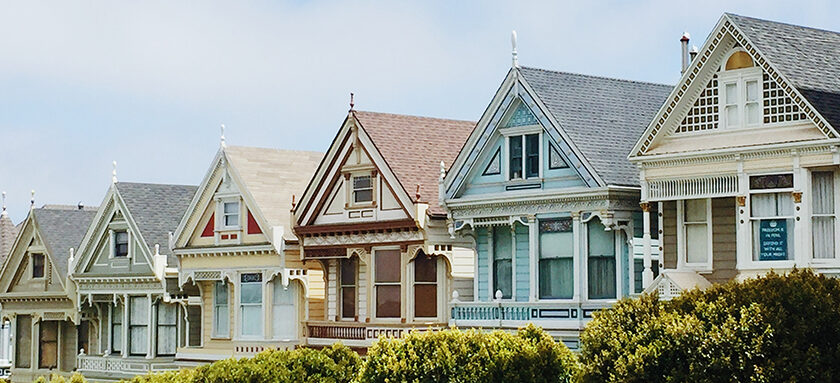Mortgages are a type of loan that allows people to use a property as collateral. They serve to ensure the borrower will pay back the money within a stipulated period. A mortgage is an agreement between a borrower and a lender which gives them the right to take your property if you do not repay your debt in time.
Both individuals and businesses use mortgages to purchase a property so they don’t have to pay the full cost of the real estate up front.
Different types of mortgages in the UK
There are two main mortgage categories: fixed-rate mortgage and variable-rate mortgage, where the variable rate has a few variations. We will go into more detail on each type of mortgage below:
1. Fixed-Rate Mortgage
This a common one and it means your interest rate remains the same for the entire length of the deal. Regardless of what happens to the Bank of England interest rate, your mortgage will remain fixed for the stated period.
Fixed-Rate mortgages offer peace of mind because monthly payments will not increase, making it easier to budget. Consequently, fixed-rate mortgages tend to be a bit higher than other kinds.
You should consider any early repayment fees should you decide to leave the deal early. Also, you should note when the fixed period ends so you can switch to a new deal. Otherwise, you’ll be moved to the standard variable rate, which may be high.
2. Variable-Rate Mortgages
Variable-rate mortgages are the opposite of fixed-rate mortgages, which means the interest rate will vary at any point. You should set money aside so you can afford any increase in your monthly payments if the rates increase during the deal.
Now, variable-rate mortgages come in different types, as explained in points 3 – 6:
3. Standard Variable Rate
The Standard Variable Rate (SVR) is the normal interest rate lenders will charge homebuyers and it lasts as long as your mortgage or until you get another deal. The change in interest rates will depend on the rise or fall of the base rate which is set by the Bank of England.
An SVR can be beneficial should you want the freedom to overpay whenever you want. This is because you can do so without incurring any early repayment fees. However, the obvious drawback is that the interest rate can change at any moment.
4. Discount Mortgages
Discount mortgages offer a discount off the lender’s SVR and are only applicable for a period of around 2-3 years. It is important to note that the SVR can vary from lender to lender, so you should take your time browsing to find the best deal.
Discount mortgages offer great advantages, the cost is one of them because they start off inexpensive and the monthly repayments will stay low. However, budgeting can be difficult because the lender can raise their SVR whenever they like.
5. Tracker Mortgages
This type of mortgage moves directly along a base interest rate. Tracker mortgages move in line with the Bank of England’s base rate, sometimes with an additional few percent. So, if the bank’s base rate increases by 0.5%, your rate will increase in the same way.
Tracker mortgages do not last long, between 2 to 5 years, but some lenders offer tracker mortgages that last as long as your mortgage or until you change to another deal. The advantage here is that if the base rate decreases, your mortgage payments will also go down. However, if the base rate rises, your mortgage payments will do too.
6. Capped-Rate Mortgages
Capped-rate mortgages move directly along with the SVR of the lender, but the mortgage has a cap/ limit. This means the interest rate will not rise over a certain level.
There are a couple of advantages to this kind of mortgage: Firstly, it provides certainty because you know the rates will not go beyond a set level. Just ensure you can afford it if the rates rise to the level of the cap. Secondly, an advantage is that capped-rate mortgages are inexpensive because they fall if the SVR falls as well.
A couple of the disadvantages of a capped rate mortgage are: One, the cap is commonly high, where the rates are often higher than other variable or fixed-rate mortgages. And two, the lender can change the rate whenever they want to reach the cap.
7. Offset Mortgages
Finally, there are offset mortgages. These create a link between your savings and your current account to your mortgage. This way, you will only have to pay interest on the difference. You will still make your mortgage payments every month, but your savings will serve as an overpayment, so you can pay off your mortgage earlier.
Final Words
Mortgages are a great option for people who are unable to purchase a property outright. It is a form of debt, yes, but when you can afford to make the monthly payments, it can help you live a more comfortable life. Not only that, but they can also be a great investment in the long run – especially if you have made upgrades that add value!
Should you choose to get a mortgage, you need to consider a few factors. Such as the loan size, the interest rate, the closing costs of the loan, the lender fees, the type of interest rate, and the term of the loan. You should also investigate other factors, such as the overall monthly running costs of a home, to ensure you will be able to keep up with the payments.
James Banerjee is a Senior SEO Manager at The AA who graduated from the University of Kent in 2014. He works at The AA, looking after the Financial Services and Cars sections on the website. Prior to this he was an Account Director working with clients such as HSBC UK and Nestle. He has a keen interest in personal finances and money-saving advice.




